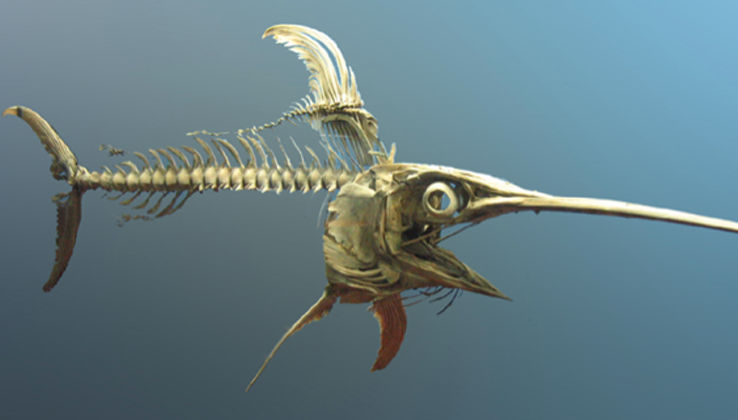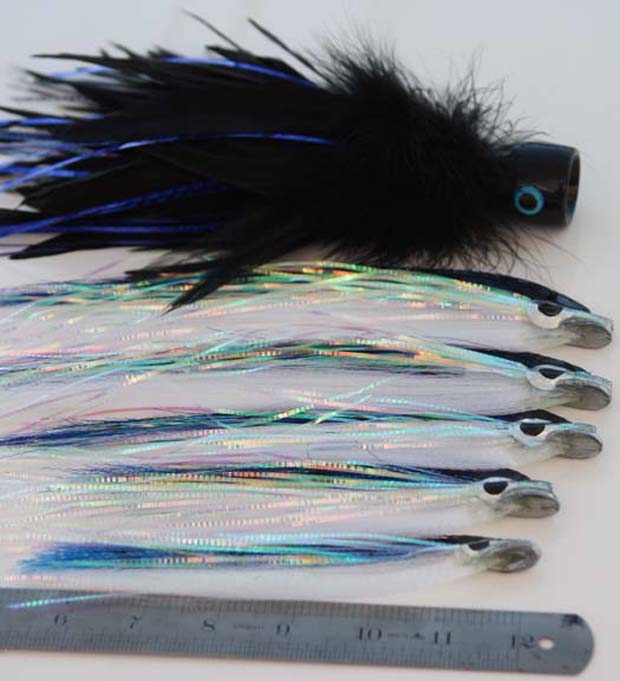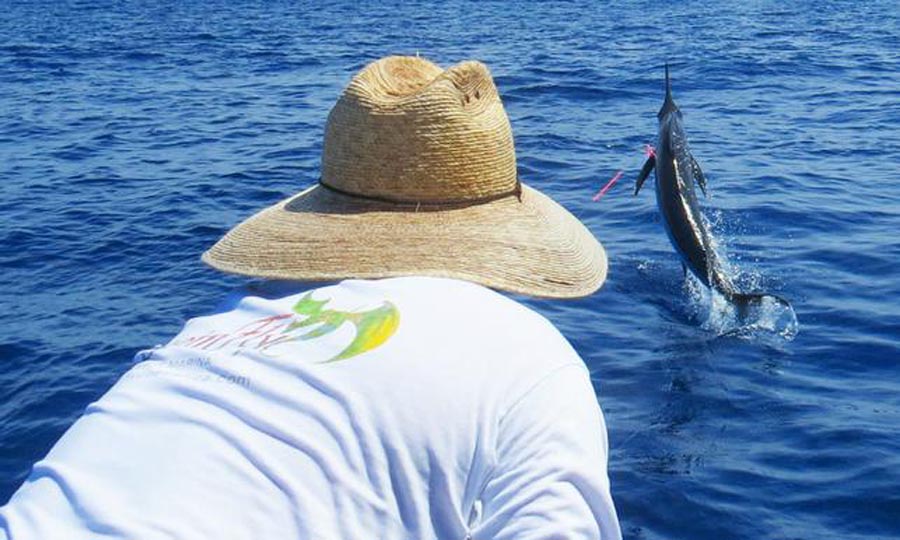
Fly fishing for billfishes – society of a few. Blue Marlin on fly, ready for release in Costa Rica at Blue Marlin Fly Fishing School aboard Dragin Fly – Captain Jake Jordan photo.
Billfish
By Skip Clement
Phil Caputo, Pulitzer Prize winner, Key West resident and skilled fly angler, described bill fishermen, marlin fishermen in particular, in terms of having a dementia he called “The Ahab Complex” in his 1988 essay by the same name. “ . . . an obsession to pursue and conquer a monster of the depths regardless of the consequences to one’s bank account, career and family life.” Caputo won his Pulitzer Prize for investigative reporting on Chicago’s corrupt political system. He also wrote the definitive book on the Vietnam War, A Rumor Of War.
Above: Capt. George Sawley holding court after his presentation at the IGFA BILLFISH EXPO on fly fishing for billfish -February 12, 2011. Capt. Skip Smith, Presenter, is in the immediate background and behind him, the inimitable Mark Sosin, Master of Ceremonies.
Whether it’s an agile white marlin quietly sneaking up behind a small, skirted ballyhoo or a grander black marlin crashing her enormous bulk down onto a trolled tuna, there is hardly a group of fish as exciting as the sailfish, spearfish, and marlins collectively known as billfish. A glance at such a fish gives a clue to their namesake. Their upper jaw projects far past the lower length, creating a slender, pointed “bill.” They have fusiform, or torpedo-shaped, bodies, stiff, lunate tails, two keels on each side of their peduncle (the region between tail fin and body), and pelvic fins that resemble long slivers.
There are nine billfish species
Sailfish (Istiophorus platypterus) [ Shortbill spearfish (Tetrapturus angustirostris), Longbill spearfish (Tetrapturus pfluegeri), Mediterranean spearfish (Tetrapturus belone), and Roundscale spearfish (Tetrapturus georgii) ] / White marlin (Tetrapterus albidus) / Striped marlin (Tetrapturus audax) / Blue marlin (Makaira nigricans) and Black marlin (Makaira indica).
Some researchers feel that Atlantic and Pacific sailfish are two separate species. A similar contention exists for Atlantic and Indo-Pacific blue marlin. There are also a few fish with characteristics similar to billfish but are sufficiently different from being classified into their group and are not considered “true” billfish. The true billfish are those from the Istiophoridae family and include sailfish, spearfish, and marlins. All are highly migratory marine predators worldwide in coastal and oceanic tropical and subtropical waters.
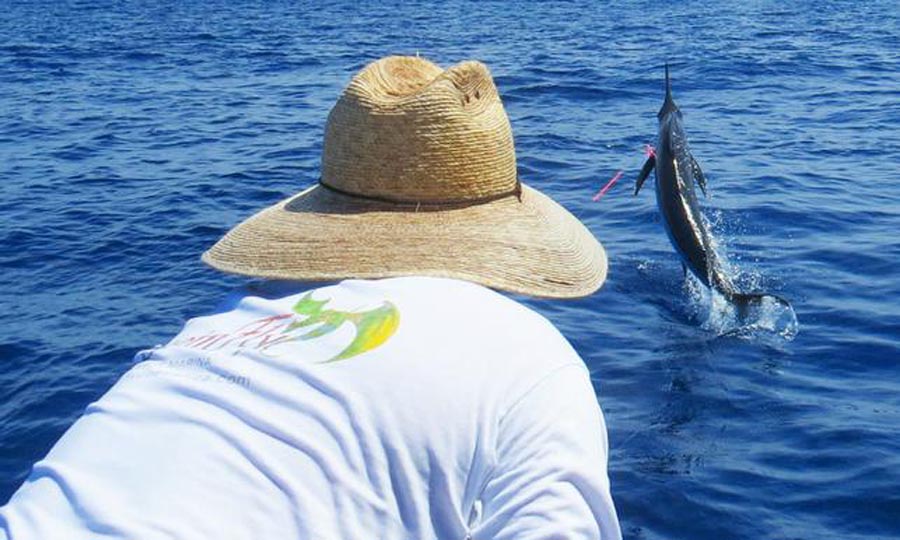
Jake Jordan with a sailfish caught on the second generation TFO BW- HD 4 piece fly rod, before the SG. // Photo: Jake Jordan
Needlefish, ballyhoo, paddlefish, and swordfish are not billfish
Needlefish and ballyhoo are inshore, surface-dwelling fish often used as bait. The upper and lower jaws in needlefish are elongated and carry many needle-like teeth. A ballyhoo’s bill protrudes from the lower rather than the upper jaw. Paddlefish are an ancient group of freshwater fish more closely related to sturgeon than billfish. Their upper jaw is also elongated into a bill, but it is wide, flat, and paddle-like, and they have a skeleton composed primarily of cartilage. The fish most often associated with the billfish is the swordfish. Swordfish are classified into the Xiphiidae family. While they look very much like marlin, there are significant differences. A swordfish’s bill is very long and, unlike a billfish, flattened into a sword shape. Additionally, with bodies that are much rounder, dorsal and pectoral fins that are sickle-shaped and do not fold down absent pelvic fins, and only a single, large caudal keel on each side of the peduncle, swordfish are not true billfish.
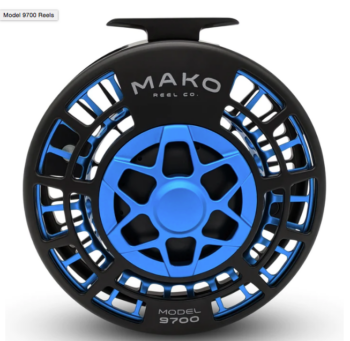
Model 9700 Reels
$2,400.00
Billfish are fast-growing, indiscriminate eaters, seldom refusing any potential prey
All billfish can be caught using similar methods; the most significant difference is the bait size used often. Billfish are indiscriminate eaters – the limiting factor of feeding is what they can fit through their mouths. Studies on billfish stomach contents confirm this and that they are not above eating others of the same species. The most common fishing method involves trolling bait, lures, or a combination of both. Small to large ballyhoo, mullet, mackerel, and strip baits are effective for sailfish, spearfish, white marlin, striped marlin, and small blue and black marlin. Drifting live bait and kite fishing are also highly effective methods. Spinning and conventional gear in the 15 – to 30-pound is sufficient for the smaller fish and sporty for the larger. In these live baiting scenarios, circle hooks show their worth. If they are fished correctly, they have much higher rates of hook-ups and lower rates of thrown hooks and are much safer for the fish. Trolling circle hook-rigged baits require special techniques but are very effective.
Large baits such as “horse” ballyhoo, mullet, mackerel, bonito, dolphin (mahi), and tuna fished with 30- to 80-pound conventional gear are used for huge sailfish and striped, blue, and black marlin. For the giant blue and black marlin, huge baits are often employed. What many an angler would consider a trophy catch, a 20-pound (and larger!) mackerel or tuna, is but a baitfish for a hungry marlin. Large baits can only be fished with the heaviest of tackles. Rods and reels should be in the 80- to 130-pound class with heavy terminal gear (leaders, swivels, hooks, etc). Fishing from a sizeable sportfishing boat is not required for sailfish and small marlin but is definitely recommended for the larger billfish. Especially when targeting the biggest billfish, a capable captain and crew are not only recommended but are required. Communication between anglers and crew is crucial for safely making a catch.
Intrepid anglers will spend fortunes and lifetimes in pursuit of billfish
Catching one is an unforgettable spectacle. When excited, such as chasing prey, billfish flare their fins and “light up.” Fin tips, highlights, and stripes are illuminated as billfish explode with iridescent purples, blues, and greens. All are extremely fast swimmers and apt to take to the air. When hooked, an angler can expect blistering runs, unexpected direction changes, violent head shakes, somersaulting jumps, and thrilling tail-walks.
Giant marlin will also sound, swimming deep down beneath the boat and frustrating the angler with its refusal to budge. With billfish, there is also an element of danger. Many an unwary and unlucky angler has been pulled overboard by a rampaging marlin. The threat of being speared or slashed as the fish is boated is even more alarming. And it is not unheard of for a billfish, either intentionally or accidentally, to charge and spear the boat or, even worse, to leap into the boat!
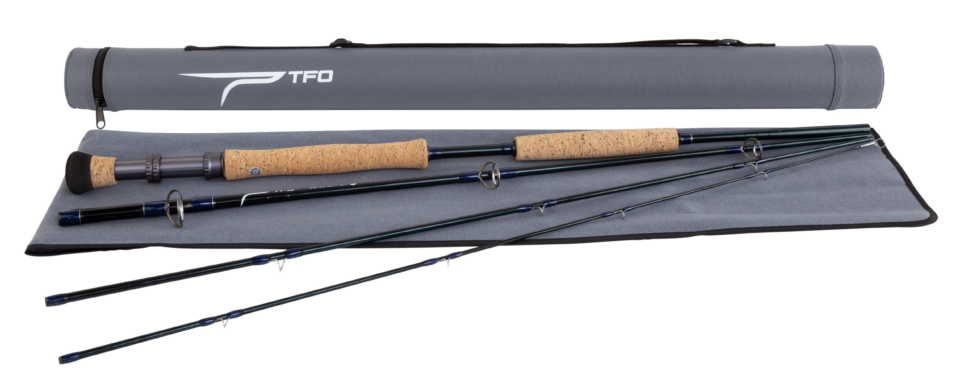
TFO 14-weight
If given the chance, billfish will fight to exhaustion and beyond
If all goes well and the fish is brought to the boat, remove it from the water if you plan to keep it. Not only is this illegal in some areas, but doing so puts tremendous strain on an already worn-out fish. To land the fish, firmly grasp the bill with both hands and thumbs pointed at each other—be sure to wear gloves – giving you the most control over the fish and its weaponry. Have a mate or another angler remove the hook or cut the line close to the fish’s mouth. Only lift the fish’s head out of the water for a picture. To revive the fish, hold its head underwater, grab the dorsal fin to keep it upright, and slowly drive the boat to push water through its gills. This might take a considerable amount of time, but it is the least the angler can do for a fish that supplied them with so much excitement. Most anglers release their fish to fight again and continue breeding because they know that these supreme sport fish are much too valuable only to catch once.
Sources: International Game Fish Association [IGFA]. Individual conversations with Capt. George Sawley, Nick Smith, Jake Jordan, and others. NOTE: You can search articles in this magazine about offshore fly fishing, and Marlin Magazine.


